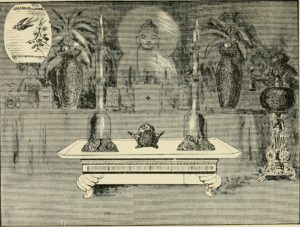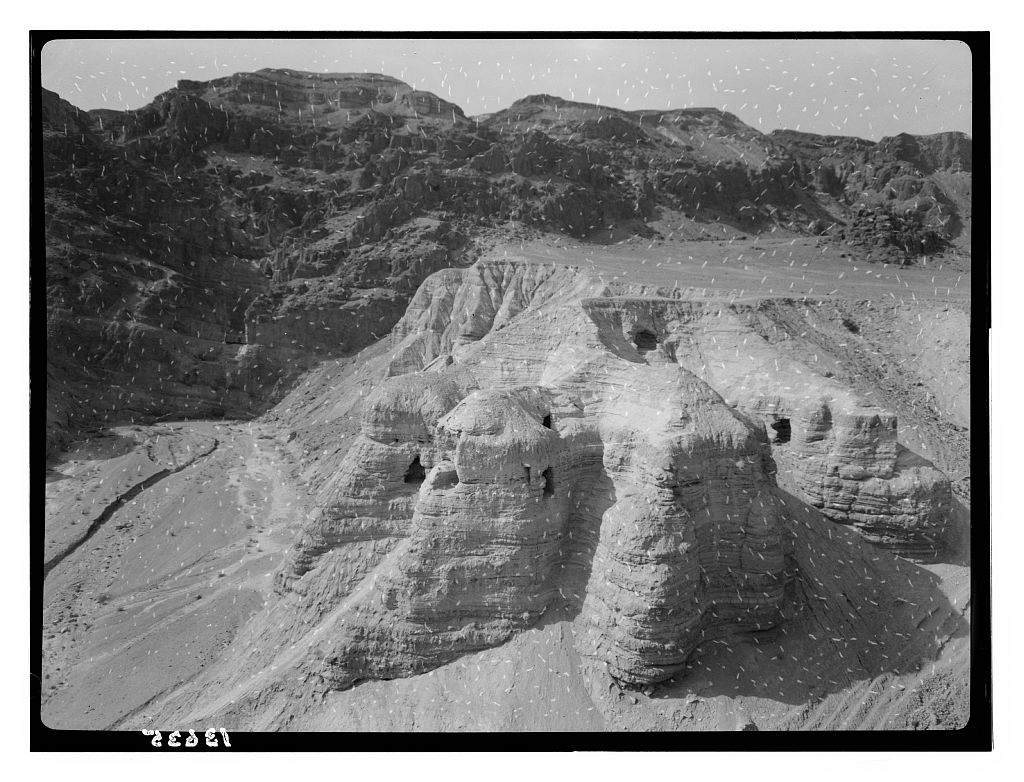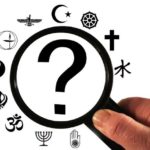Dead Sea Scrolls and the Essenes
In 1946, the origin of the newly discovered Dead Sea Scrolls was attributed to the authorship of the Essenes, who has become known around the world as an old and secretive religious brotherhood. However, it is usually assumed to be an ancient group only. In actuality, the sect is still in existence, or revived. The Dead Sea Scrolls are commonly considered part of the Essene library, but the actual authorship is not defined. Either the Essenes wrote these documents, which include several copies of parts of the Hebrew Bible, or they were simply the keepers of the same.
The sect is recorded as early as the second century BCE, the term actually encompassing several small sects gathering in cities and communes throughout Roman Judea and embracing asceticism, immersion, and poverty. Some people say they seceded from the Zadokite priests. The Essenes, sharing mystic, eschatological, messianic and ascetic beliefs, were the smallest of three major religious groups of the time; the other two groups were the Pharisees, the political and social leaders, and the Sadducees, the keepers of the temple.
Josephus (The Jewish War, c.75 CE) claimed first-hand knowledge of the Essenes. He explained their devotion to piety, celibacy, poverty and strict adherence to Jewish law. They practiced a ritual immersion in water every morning, ate together after prayer, eschewed anger, devoted themselves to charity and benevolence, studied the books of the elders, preserved secrets and knew the names of all the angels in their sacred writings.
Ancient Essene
Ancient Essene communes usually did not include women, and their daily lives were regulated by officials. They believed in immortality and divine punishment for sins, like the Pharisees, but denied the resurrection of the body and shunned temple worship. Membership to the sect followed strict rules, rites and privileges.
The Essenes did not consider themselves aligned with any one religion, but rather a separate people, distinguished by the illumination of their inner life and their knowledge of hidden mysteries of nature. This sense of universality and secrets is akin to the Druids and Masonic orders. Membership was open to anyone who met the selective tests and pledged himself to a mission of the triumph of light over the darkness of the human mind.
As a brotherhood of holy men and women, the Essenes were often persecuted or ostracized. Nonetheless, they were open to all religions and beliefs that would enlighten mankind. They considered themselves true saints, masters of wisdom, and hierophants (chief priests of Eleusinian mysteries) of the ancient arts of Mastery. Among the notables claimed to be Essenes were St. Ann, Joseph and Mary, John the Baptist, John the Evangelist, Moses and even Jesus. Perhaps this is why these people were unabashed in claiming they were beyond normal humanity.
 Essenes studied all religions to extract the great scientific principles involved. They considered each religion a different stage of a single and ultimate revelation. They revered Chaldeans, Zoroaster, Hermes Trismefiste, Enoch and Moses, and believed they could communicate with angelic beings. Essenes believed that they had solved the question of the origin of evil on Earth.
Essenes studied all religions to extract the great scientific principles involved. They considered each religion a different stage of a single and ultimate revelation. They revered Chaldeans, Zoroaster, Hermes Trismefiste, Enoch and Moses, and believed they could communicate with angelic beings. Essenes believed that they had solved the question of the origin of evil on Earth.
Preserving Purity of Soul for the Afterlife
To maintain their purity of soul for the afterlife, the sect expended a great deal of energy avoiding contact with evil spirits. This position held them adamant in their stances, which often led to persecution or ostracism. They were the guardians of the Divine Teaching, which is why they maintained a library of manuscripts ancient even to them. They spent a great deal of time decoding the manuscripts, translating them and reproducing them.
“The Essenes considered their Brotherhood-Sisterhood as the presence on earth of the Teaching of the sons and daughters of God. They were the light which shines in the darkness and which invites the darkness to change itself into light. Thus, for them, when a candidate asked to be admitted to their School, it meant that, within him, a whole process of awakening of the soul was set in motion. Such a soul was ready to climb the stairs of the sacred temple of humanity.
The Essenes differentiated between the souls which were sleeping, drowsy, and awakened. Their task was to help, to comfort, and to relieve the sleeping souls, to try to awaken the drowsy souls, and to welcome and guide the awakened souls. Only the souls considered as awakened could be initiated into the mysteries of the Brotherhood-Sisterhood. Then began for them a path of evolution that could not stop anymore through the cycle of their incarnations.”
The Essene brothers and sisters wore white to symbolize the purity of the soul. They were usually barefoot, to stay in contact with the ground. The Hebrews referred to them as “The School of Prophets”; in Egypt, they were referred to as “the Healers” or “the Doctors.” They were property holders in most big cities, and even had a door in Jerusalem called the “door of the Essenes.” In general, they were respected as healing, honest, peace-loving, discreet and the source of the greatest Hebrew prophets. They maintained places of teaching, healing, and lodging, with doors open to anyone who sought them out. Different members maintained different missions, all following the laws of reincarnation (evolution and mercy) and the laws of destiny (cause and effect).
When an individual asked to be admitted to the order, he or she was initiated with an extensive examination and evaluation of his or her life to date. While this sounds ominously like the “brainwashing” of modern cults, the initiation phase was apparently successful, when one considers the alumni of the Essenes. Perhaps this is an explanation of what Jesus was doing between the ages of 12 and 33. Once initiated, the Brother or Sister was given the robe, staff, and mission. The Brother or Sister would give the oath to fulfill this mission while constantly purifying himself or herself to stay worthy of the mission.
Each Essene was pledged to follow the Essene principles and rules of life. Each Brother or Sister (Master) expected to bring further wisdom to the world, upon which future Masters would build.
Each Master was required to respect the privacy of others. Solitude, the couple, and the community are the three lives of an individual and the Masters were expected to respect their own three lives as well as those of others. The law of silence and discernment forbade revealing the Teaching to non-initiates; therefore, Essenes did not try to convert another person to any belief. They practiced universal hospitality, nondiscriminatory humanitarian acts, and equality of the sexes. The School condemned all forms of servility and slavery.
 For in-depth explanations of the value of Mary, the mother of Jesus, and of Jesus as an Essene, please see Mary, the Essene Virgin: The Birth of the Master Jesus, Jesus, and the Essenes and Essene Prayer Said by the Virgin Mary.
For in-depth explanations of the value of Mary, the mother of Jesus, and of Jesus as an Essene, please see Mary, the Essene Virgin: The Birth of the Master Jesus, Jesus, and the Essenes and Essene Prayer Said by the Virgin Mary.
Evidence of the continuation of the Essene movement
Evidence of the continuation of the Essene movement can be found in the writings of church father Epiphanius in the fourth century CE. He described the Essenes as having separated into two distinct groups. The Ossaeans were reportedly those Essenes who lived before him. Jews by nationality, this brotherhood did not recognize Moses as a Master. Epiphanius identified the other, main, group as the Nazareans. Also Jewish, they came from a more select geographical area and kept all Jewish observances. They believed Moses had received laws from a source other than the Essenes.
There are contradictory interpretations of ancient manuscripts about the Essenes, probably due to their secretive practices. They have been associated with southwestern India DNA (Nazarean families of India), and Kabbalah. But between the fourth century and 1946, there appear to be no records of the existence of this brotherhood.
After the discovery of the Dead Sea Scrolls, new Essene churches and movements have arisen – or perhaps have come out of hiding?
(Around the beginning of the 20th century, Grace Mann Brown instituted the Order of the Essenes, and Rosicrucianism embraced Essene beliefs. As recently as 1981, David Asia Israel created the Order of the Nazoreans Essenes, incorporating religious thought and practices from Nazarean, Gnostic Christian, Buddhist, and Manichaean sources. The Essene Spirit was founded by Olivier Manitara in Quebec.) Several new Essene movements and churches can be found throughout the United States.
While this could be an emergence of secretly maintained brotherhoods hidden for 20 centuries, it is more probable that such a non-sectarian belief system is appealing in a world where few religions are accepted on blind faith. Humankind still needs a system to offer hope and guidance. A year-long training period based on the archangels Raphael, Gabriel, Uriel, and Michael allows the initiate to test whether he or she is strong enough to follow the way of life involved. Many practices can now be searched out on the Internet, as these movements become solidified.






